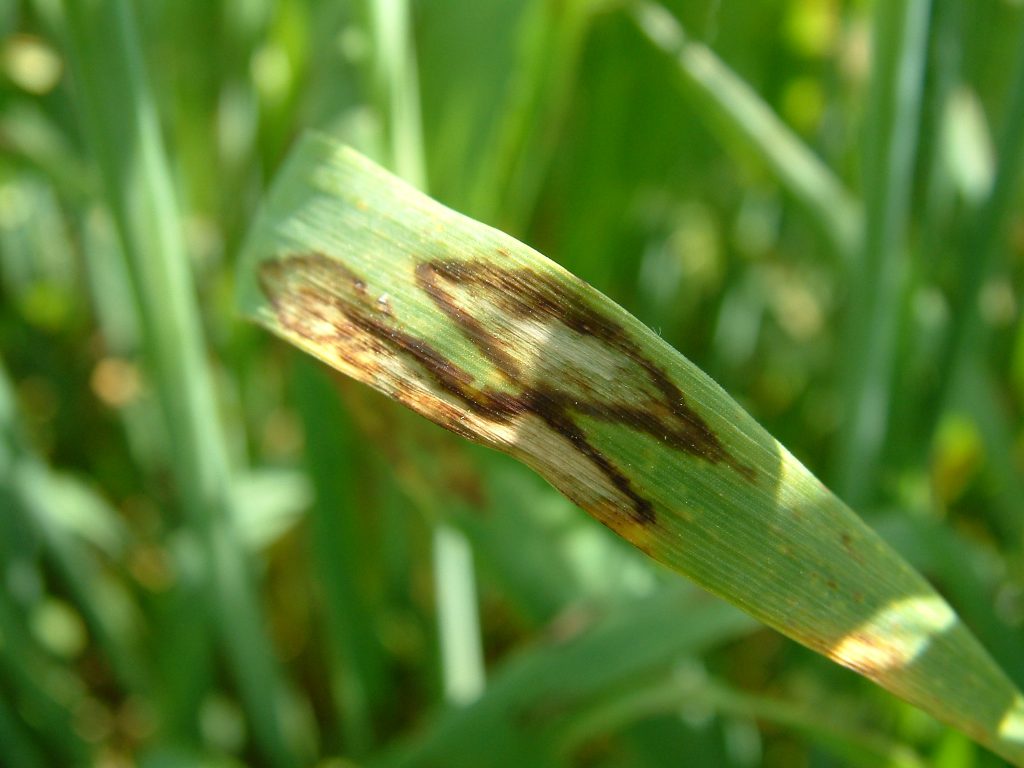Diversity of actives essential for maintaining effective barley disease control
24th April 2019
As the effective control of barley diseases becomes increasingly difficult to achieve due to changes in their sensitivity to widely used fungicides, growers throughout the UK must use a diversity of modes of action to combat key diseases.
As the effective control of barley diseases becomes increasingly difficult to achieve due to changes in their sensitivity to widely used fungicides, growers throughout the Midlands, the north of England, and Scotland, must use a diversity of modes of action to combat key diseases including rhynchosporium, net blotch and ramularia.
That is the advice from Will Nicholls, Regional Agronomy Manager for ADAMA UK, who urges growers to consider alternative fungicide modes of action – not only to provide robust crop protection, but also to prolong the effective lifetime of key SDHIs, azoles and strobilurins.
“Over the past couple of years, the efficacy of some of the principal SDHI, azole and strobilurin fungicides used to protect barley has started to erode due to subtle sensitivity shifts and the onset of disease resistance,” Will explains. “Meanwhile, alternative modes of action such as cyprodinil and folpet remain unaffected with no resistance issues noted to date. Growers should therefore incorporate these active ingredients into their spring spray programmes to provide robust protection.”
The key to delivering high yields and good grain quality in barley is to maximise the crop’s green area index – by protecting and retaining tillers for as long as possible – and to maximise grain storage capacity and grain filling by promoting healthy spikelet and ear development.
“Spring spray programmes should therefore be designed to reduce the effect of infection on tiller numbers early in the season and to keep the entire plant as green as possible for as long as possible,” Mr Nicholls continues. “A well-timed T1 spray (typically at GS 30-32 in winter barley or GS 25-30 in spring barley) which protects the crop around tillering is therefore critical and should be followed by an equally effective and long-lasting treatment at T2 (typically at GS 39-49) to provide continued protection.
“A multisite fungicide should be included in the mix at T1 for protection against rhynchosporium and resistance management,” Will adds. “There is also evidence to show that a multi-site at T1 can provide additional activity against ramularia. The key timing for ramularia control is T2, so the inclusion of a multi-site should also be considered here: chlorothalonil will provide the best efficacy at this timing, but folpet has also been shown to reduce ramularia levels. Arizona® (500g/l folpet) also has the added benefit of not interfering with the uptake of curative partner products and providing supplementary activity against brown rust and mildew.”
Mr Nicholls also recommends the inclusion of isopyrazam (IZM) and cyprodinil at T1 and T2: “The ‘double-binding’ effect of the IZM molecule means it is more persistent than other SDHIs as it accumulates in and remains fixed to the cuticular wax of the leaf, as well as binding strongly to its target site in the mitochondria of the fungus cells. The former bond ensures long-lasting protection while the latter provides strong efficacy by inhibiting the fungi’s energy production.
“Meanwhile, cyprodinil – a fungicide of the anilinopyrimidine class with good efficacy against rhynchosporium and net blotch, and some intrinsic activity against ramularia – brings an entirely different mode of action thereby reducing the potential for further sensitivity shifts. Bontima® is a co-formulation of cyprodinil (187.5g/l) and isopyrazam (62.5g/l) which provides long-lasting protectant and curative control of rhynchosporium and net blotch with additional activity against eyespot. Its cyprodinil component increases the diversity of modes of action being used, while the long-lasting effect of isopyrazam ensures the crop remains protected for an extended period. It can be used on all varieties of winter and spring barley to preserve the green leaf area and is flexible enough to be used alongside prothioconazole in highly curative rhynchosporium situations.”

